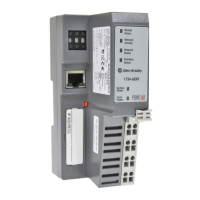Publication 1734-UM011D-EN-P - May 2011
Preface vii
Terminology
Refer to the table for the meaning of common terms.
POINT I/O 2 relay output module POINT I/O 2 Relay Output Module Installation Instructions (OX2) 1734-IN587
POINT I/O 2 Relay Output Module Installation Instructions (OW2) 1734-IN055
POINT I/O synchronous serial interface
absolute encoder module
POINT I/O Synchronous Serial Interface Absolute Encoder
Module Installation Instructions
1734-UM007
POINT I/O cold junction compensation
wiring base assembly
POINT I/O Cold Junction Compensation Wiring Base Assembly
Installation Instructions
1734-IN583
POINT I/O wiring base assembly POINT I/O Wiring Base Assembly Installation Instructions 1734-IN013
Very high-speed counter module POINT I/O Very High-speed Counter Module Installation
Instructions
1734-IN003
Very High-speed Counter Module User Manual 1734-UM003
RSLinx RSLinx Enterprise Getting Results Guide LNXENT-GR001
For Information About See This Publication Publication Number
Many of these publications are available online from:
http://literature.rockwellautomation.com/
Rockwell Software products contain extensive tutorials and
help screens. We recommend that you use the tutorials and
help screens to learn about these products.
For more information about Rockwell Software products,
visit the Rockwell Software internet site:
http://www.software.rockwell.com
Term Definition
BootP BootP (Bootstrap Protocol) is a low-level protocol that provides
configurations to other nodes on a TCP/IP network. BootP
configuration files let you automatically assign IP addresses to an
Ethernet module. You can also obtain subnet masks and gateway
addresses from BootP.
Bridge A node between two similar communication subnets where protocol
translation is minimal.
CIP Control and information protocol, the EtherNet/IP application layer
uses the producer/consumer networking model. In this model one
producer broadcasts (multicasts) the data once to all the consumers.
All consumers see the data simultaneously and may choose whether
to consume (receive) the data or not. Delivery time is consistent, no
matter how many consumers there are.
Connection The communication mechanism from the controller to another
module in the control system, usually used to exchange I/O data.
Consumer A destination device in the CIP networking model. See CIP.

